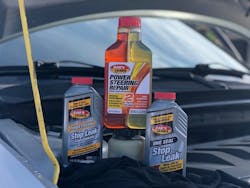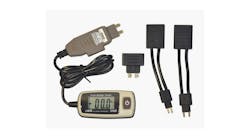Like any fluid under the hood, power steering fluid should be at the right level to function properly, prevent damage to the pump and other components, and maintain safe vehicle operation.
Technicians can save customers big repair bills and help keep them safer on the road by knowing a few common symptoms of a power steering fluid leak:
- Noisy steering. If the power steering is making a lot of noise, especially when the vehicle is moving slowly, like in a parking lot, it’s time to check the fluid level in the power steering reservoir. Older cars are especially susceptible to ‘power steering squeal’ when the fluid level gets low. The noise can vary from an occasional chirp to a shrill or shriek, especially during low-speed maneuvers. Other times, it could be more of a dull whine when the steering wheel is turned extreme left or right.
- Difficult steering. Drivers might not notice much steering performance difference on the highway, but at lower speeds, they’ll have to put in a lot more effort to turn the steering wheel. As power steering systems lose fluid, they work less efficiently. Eventually, drivers will start to feel the difference on the steering wheel end, making it much harder to turn the wheel than it normally is. This is a sign that the fluid is getting low, which could signal a leak.
- Leaking fluid. It’s easy to ignore just a few drops of any kind of fluid under the car. If it’s not a puddle, most people don’t even think twice about it. But it’s important to investigate any fluid before it becomes a bigger issue. Wipe down the power steering reservoir and lines and look closely to determine if it’s coming from the power steering circuit or not.
Once it’s determined that a vehicle has a power steering fluid leak, it’s important that customers take immediate action. A small leak can quickly become large enough to cause the pump to run dry and result in expensive damage. When treated early, the leak can be stopped with a proven chemical repair like Bar’s Leaks One Seal Stop Leak, No. 1334; Power Steering Repair, No. 1600; or Power Steering Stop Leak Concentrate, No. 1630.
“Power steering fluid leaks sometimes evolve slowly over a long period, and drivers may not notice the leak until it becomes a big problem,” says Clay Parks, vice president of development for Bar’s Leaks. “At the first sign of a leak, drivers should take action by installing a safe, easy and affordable solution like our Power Steering Repair. Almost immediately, it will stop the leak and prevent further issues, while extending the life of the power steering system.”
Information provided by: Bar's Leaks


